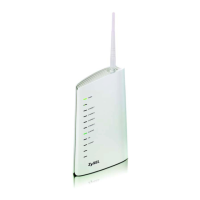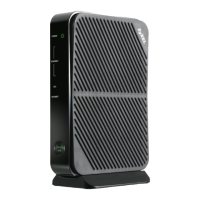Chapter 8 Network Address Translation (NAT)
P-870HN-5xb User’s Guide
151
The following table describes the labels in this screen.
8.4 The Trigger Port Screen
Some services use a dedicated range of ports on the client side and a dedicated
range of ports on the server side. With regular port forwarding you set a
forwarding port in NAT to forward a service (coming in from the server on the
WAN) to the IP address of a computer on the client side (LAN). The problem is
that port forwarding only forwards a service to a single LAN IP address. In order to
use the same service on a different LAN computer, you have to manually replace
the LAN computer's IP address in the forwarding port with another LAN
computer's IP address.
Table 41 Port Forwarding Edit
LABEL DESCRIPTION
Active Clear the check box to disable the rule. Select the check box to enable it.
This field is not editable if you are configuring a User Define rule.
Service Name Enter a name to identify this rule. This field is read-only if you click the
Edit icon in the Port Forwarding screen.
WAN Interface Select a WAN interface for which you want to configure port forwarding
rules.
External Start
Port
Enter the original destination port for the packets.
To forward only one port, enter the port number again in the External
End Port field.
To forward a series of ports, enter the start port number here and the
end port number in the External End Port field.
External End
Port
Enter the last port of the original destination port range.
To forward only one port, enter the port number in the External Start
Port field above and then enter it again in this field.
To forward a series of ports, enter the last port number in a series that
begins with the port number in the External Start Port field above.
Internal Start
Port
Enter the port number here to which you want the Device to translate
the incoming port. For a range of ports, enter the first number of the
range to which you want the incoming ports translated.
Internal End
Port
Enter the last port of the translated port range.
Server IP
Address
Enter the inside IP address of the virtual server here.
Protocol
Select the protocol supported by this virtual server. Choices are TCP,
UDP, or TCP/UDP.
Back Click Back to return to the previous screen.
Apply Click Apply to save your changes back to the Device.
Cancel Click Cancel to begin configuring this screen afresh.

